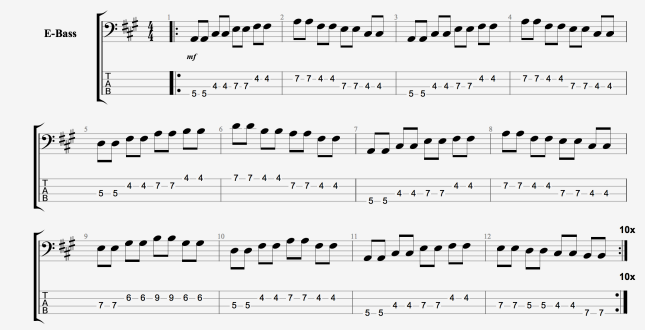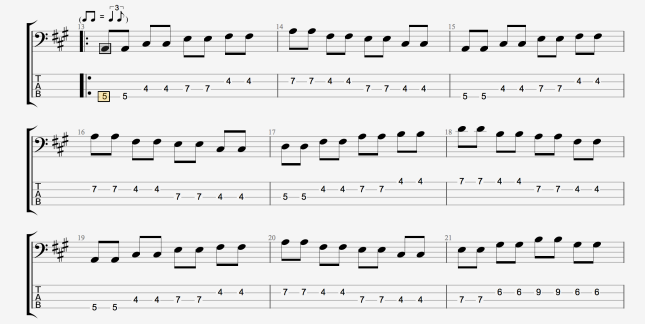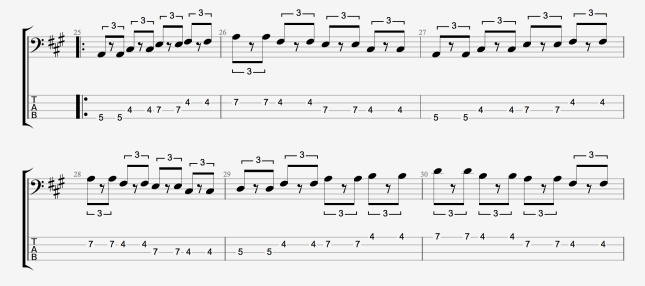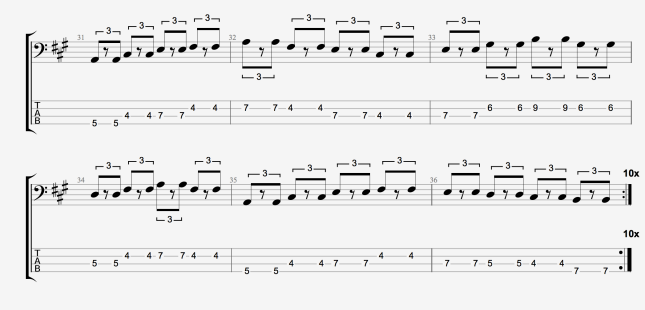Hi there,
Thanks for taking the time to read my blogs 🙂 Feel good about posting comments / questions, any other subject matters that people would like me to blog on.
Just to let you know i’ll be eventually adding some audio clips/ videos but they’ll be uploaded to my blogger page soon (www.jsmusicschool.blogspot.com)(as wordpress charge for mp3/ video uploads)
This blog (and the next one) will help beginner bass players to really start to mix up your 12 bar blues patterns with different rhythms. So using these new rhythms in conjunction with various arpeggios will give you more options/variety.
Below I’ve got 3 basic 12 bar blues progressions in A Blues. (the arpeggios are Major 6, Major and descending major bass line at bar 12 of each pattern)
Pattern 1 is ‘straight’ quavers :
Pattern 2 we’ve got a traditional ‘shuffle’ feel where each beat is split up into triplet quavers (1 + a, 2 + a, 3 + a, 4 + a). Each beat has 1 note lasting 2/3rds of the beat (1 and the +) and the 2nd note on the ‘a’)
** this is stated by the triplet 8th note feel sign at the top left hand side**
Pattern 3 is based on the triplet quaver structure of 3 notes per beat but the + is a rest. This provides you with another variation and choppy feel.
Practice these at various speeds with a metronome 🙂
Next blog will look at varying the rhythms within each bar!
Many thanks for reading.
James Schofield
Twitter: @jsmusicschool
Facebook: http://www.facebook.com/jsmusicschool







